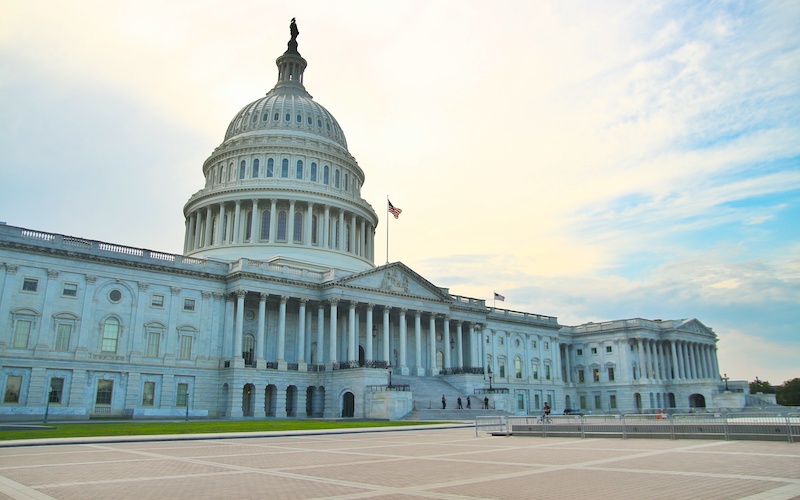
Empirical study of the ACA’s implementation provides insight into the delegation of policymaking authority.
In a long-waited decision, the U.S. Supreme Court recently sided with the Trump Administration in exempting employers who have a “moral or religious objection” from the requirement to provide their employees with contraceptive health care coverage.
The controversy emanated from the Patient Protection and Affordable Care Act’s (ACA) mandate to provide coverage for all preventive health care services free of cost. The so-called contraceptive mandate has been one of the most contentious parts of the ACA. The recent ruling caps off, at least temporarily, a decade of numerous lawsuits and Supreme Court showdowns.
Litigating the ACA—a signature achievement of the Obama Administration—in front of the Supreme Court is nothing new. In fact, the nation’s highest court will hear yet another challenge to the ACA later this year about the entire law’s constitutionality.
The Court’s most recent decision, Little Sisters of the Poor Saints Peter and Paul Home v. Pennsylvania, did not directly emanate from the ACA itself. Instead, this dispute arose from an objection to the Trump Administration’s interpretation and implementation of the ACA’s contraceptive mandate through the rulemaking process. In the modern administrative state, rulemaking fulfills a crucial role in governance because, when enacting statutes, the U.S. Congress routinely delegates the task of filling in important policy details to federal bureaucrats. Indeed, with Congress increasingly gridlocked, the vast majority of policymaking in the United States today may be of a regulatory more than a legislative nature. Yet each final regulation essentially holds the same force of law as a congressionally passed statute.
One of the clearest examples of the increasing importance of rulemaking to U.S. policymaking can be found in the ACA, which we focus on in a recent article. We collected data on all regulatory actions related to the ACA that have been undertaken since its enactment, providing the first exploratory analyses of both the law itself and its ensuing rulemaking activities. Our dataset contains the universe of regulatory actions from both the Obama and Trump Administrations that were triggered by the ACA. These data allow us to illustrate the large amount of policy-making activity going on “under the hood” of the ACA, while much of the original statutory text remains on the books.
Although observers in the health policy and administrative law fields have long recognized the vast amount of regulatory delegation contained in the ACA, the numbers presented in our analyses are truly staggering. By our count, the final version of the ACA amounted to 961 pages, or about 475,000 words, which so far have triggered 265 unique rulemaking activities. These regulations translated to almost 9,000 pages, or more than 9,000,000 words, that were finalized by the end of 2019.
A more detailed look at the regulatory actions provides further insights about congressionally delegated authority and what executive branch agencies do with that authority.
The largest initiator of ACA-related regulatory activities was, unsurprisingly, the U.S. Department of Health and Human Services, and particularly the Centers for Medicare and Medicaid Services, which conducted two-thirds of all rulemakings. The Internal Revenue Service followed with 17 percent of rulemaking under the ACA, just above the Employee Benefits Security Administration, with 11 percent.
The vast majority of ACA-related rulemakings were deemed by these agencies to be “significant,” economically or for other reasons. Interestingly, only 132 of the 265 ACA-related regulatory actions followed the standard procedures governing agency rulemaking, while the others took non-standard paths—such as being issued as interim final rules. Moreover, 35 of the 265 rules were merged with other rules, and 37 rules were ultimately withdrawn. Such actions make it incredibly complicated to track regulatory activity.
We also noticed patterns in the types of regulatory instruments used over time. The use of interim final rules—which do not require public participation in the rulemaking process—early in the life of the ACA can be explained by resource constraints and time pressures. Both the Obama and Trump Administrations, however, continued to use this type of regulatory device over time. We also noticed a spike in rulemaking activity from 2012 to 2014 that coincided with the implementation of many large components of the ACA, such as Medicaid expansion. Finally, although regulatory activity has slowed under the Trump Administration, we found that a large percentage of rule withdrawals occurred during this Administration’s tenure.
Yet behind all these numbers emerges an interesting dilemma that raises significant questions about the extent and specificity of congressional delegation. Indeed, both the Obama and Trump Administrations have taken advantage of the ACA’s vast delegation of policy-making power to the public bureaucracy. Regulatory policymaking offers executive actors large amounts of flexibility, allowing Presidents to initiate significant policy changes depending on their administrations’ goals and preferences, rather than those of Congress.
To explore these issues, we focused on two examples that illustrate the importance of policy implementation through the rulemaking process as well as how policy content can change due to personnel shifts in presidential administrations.
One example is the contraceptive mandate. In implementing the ACA, the Obama Administration sought to walk the tightrope of expanding contraception coverage while not offending those with religious objections to birth control. After a series of challenges to Obama-era rules, this issue remained unresolved as the Trump Administration took over. Once in office, the new Administration abruptly changed course—relying on interim final rules—to provide much more flexibility to employers, allowing them to opt-out of providing birth control coverage to employees on religious and moral grounds.
The other case study, which was equally controversial, focuses on short-term limited duration insurance plans. In this instance, the Obama Administration had sought to protect the ACA insurance marketplaces by strictly limiting the availability of plans that only offer very limited protections. Once more, the Trump Administration’s regulatory implementation—which, again, relied heavily on interim final rules—almost wholly reversed course from its predecessor and eventually found support in the appeals court.
So, where does this leave us?
The ACA is perhaps the most controversial and consequential piece of legislation to come out of Congress in the last decade, and accordingly, it has received significant media and scholarly attention. Its regulatory reach, however, has seen much less in the spotlight. By providing the first detailed analysis of the regulatory enterprise triggered by the ACA, our article puts numbers to the anecdotal evidence that regulations have gained dominance in U.S. policymaking.
Our findings also bring renewed focus to age-old questions about how much congressional delegation is permissible under the U.S. Constitution. The ACA, and our analysis of it, also raises much thornier questions about the specificity of congressional delegation. If Congress delegates its powers so vaguely that two administrations can credibly offer diametrically opposite policy implementation activities, maybe delegation has gone a step too far.
As we note in our article, “scholars would be well advised to pay close attention to all forms of rulemaking activity in their analyses of the ACA or other health care statutes.” The data we collected also suggest that policy advocates, citizens, and the media must pay greater heed to the implementation of major statutes—and not just to their passage.





